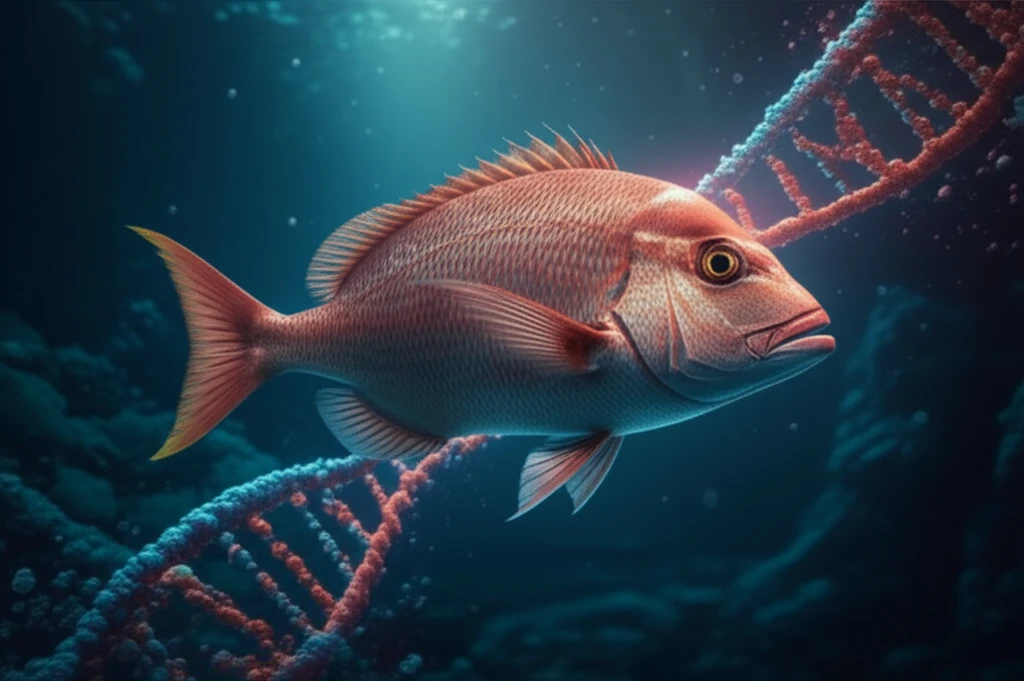
Unlocking the Secrets of the Crimson Snapper: How New Genetic Markers Can Help Restore Fish Populations
"Scientists identify key genetic markers to track and protect the iconic Crimson Snapper, offering new hope for sustainable fisheries."
The Crimson Snapper (Lutjanus erythropterus), a vibrant and economically important fish, faces increasing threats from overfishing and environmental changes in the West Pacific and Indian Oceans. This decline has prompted large-scale hatchery release programs in China since the 1990s, aimed at replenishing dwindling wild populations.
However, a significant challenge has been the inability to differentiate between released, captive-bred individuals and their wild counterparts. Without a reliable method for distinguishing these groups, assessing the true impact and effectiveness of restocking efforts becomes nearly impossible.
To address this critical gap, a new study has identified and characterized 22 polymorphic microsatellite loci—specific DNA markers—in L. erythropterus. These markers offer a powerful tool for distinguishing released fish from wild populations, enabling more effective monitoring and management strategies.
Microsatellites: Genetic Fingerprints for Fish

Microsatellites are short, repeating sequences of DNA that vary in length between individuals. These variations act like genetic fingerprints, allowing scientists to identify and track specific fish or populations. The research team constructed a microsatellite-enriched genomic library from Crimson Snapper samples collected off the coast of Sanya, China.
- Extracting DNA from fish tissue.
- Digesting the DNA with a restriction enzyme (Msel).
- Ligating the DNA fragments to adapters.
- Amplifying the fragments using adapter-specific primers.
- Hybridizing the products with a biotin-labeled (GT)13 probe to isolate GT-rich DNA fragments.
- Cloning and sequencing the positive clones to identify microsatellite repeats.
The Future of Crimson Snapper Conservation
The 22 newly identified microsatellite loci represent a significant advancement in the toolkit for managing Crimson Snapper populations. With an average of 4.32 alleles per locus, these markers provide sufficient variability to differentiate between individuals and populations. Observed and expected heterozygosities ranged from 0.065 to 0.867 and from 0.085 to 0.832, respectively, indicating a good level of genetic diversity.
While some loci showed deviations from Hardy-Weinberg equilibrium and evidence of null alleles, the overall panel of markers provides a valuable resource for:
Distinguishing released captive-bred L. erythropterus individuals from wild individuals.<li>Assessing the genetic diversity and structure of Crimson Snapper populations.</li><li>Monitoring the effectiveness of restocking programs.</li><li>Informing sustainable fisheries management practices.</li>These genetic markers will empower scientists and conservationists to make informed decisions, ultimately contributing to the long-term health and sustainability of Crimson Snapper populations in the region.
